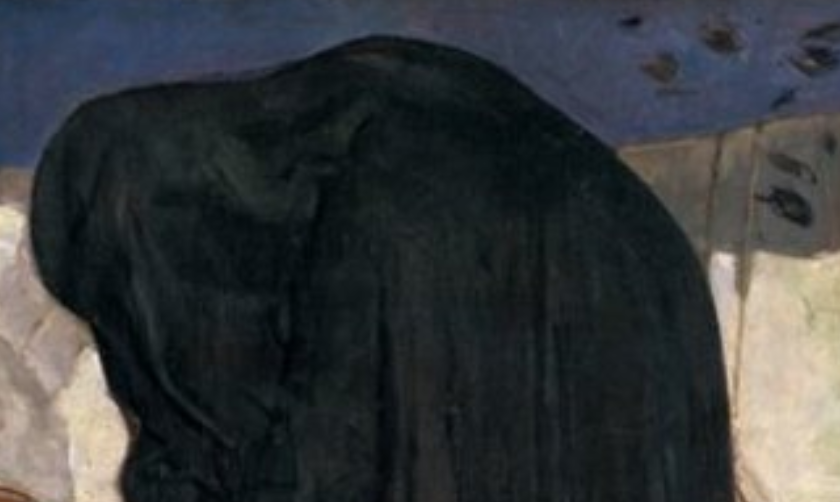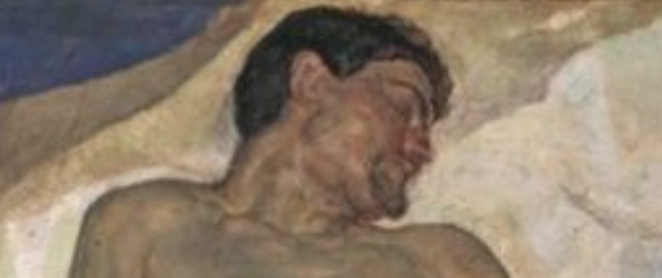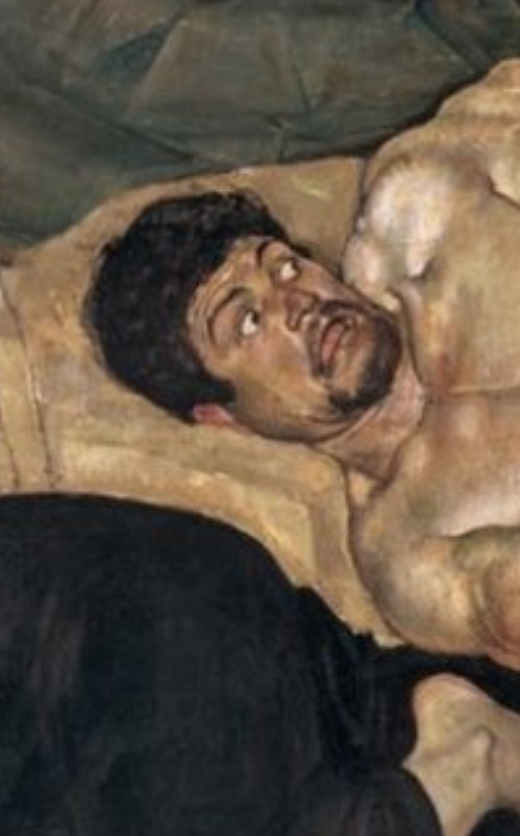A more fully developed follow-up to this essay can be found here
NOTE, ADDITION MAY 12, 2020:
My writings on culture, psychology and spirituality have primarily been an attempt to deconstruct and analyze the European Shadow, as according to CG Jung. Contemporary artists and painters are “open vehicles” for expression of the confluences between painting, psychology and cultural events.
Examining this material with an analytic lens, allows for the hidden potential (the value that is lost in obscurity) to be untangled. This is collective shadow work, in the form of essays, or blogging.
Ultimately this “art” and “sexuality” discussion becomes an examination of the European Psyche, and its conflict with the daul-shadow-aspects: the Jew & Black Woman. Those drawn to the article are hence dealing with the influence of a broad social-cultural conflict that is in deep tension in the psyche:
Why did the head split of the from the body?
Why is my life meaningless? Except I still look at beautiful things that dazzle?
Bellow is a psychoanalytic treatment of this European-complex surrounding beauty.
WARNING: mature content
American culture, which values beauty, youthfulness and appearances incredible highly, conditions an attitudinal outlook that shapes people’s interactions. If a culture emphasizes beauty alone, then it becomes two-dimensional, and those experiencing it, extremely limited. The fascination with dazzling facades acts as a barrier to humanity and intelligence.
An individual who dresses wonderfully, or has stunning features, may allure the eyes, but are people, with souls too! Remember, they are not the flattened image to click “like” on! I’ve seen this far too many times not to explicitly comment on it in this article.
In order to access the transformative effects of beauty and its association with erotic energy, there must be a deeper understanding and a willingness to move past transfixed, unconscious marveling.
This is equally as true in the creative arts, where each individual artist, as well as viewer, carries a wide-ranging quality of perspective towards what appearances, body and beauty mean.
Culture and the Individual
The current #MeToo movement is a heated, watershed cultural moment, that I hope results in a reconfiguration of views and treatment towards women, and between the sexes. Social movements are pivotal to human development, and along with collective movements, there is a need for an internal revolution of attitudes and understanding. This is the realm of psychology that I focus on.
Late works by Pablo Picasso, such as this Mousquetaire et nu assis (1967), were rife with erotic imagery, which for the artist was often tied up with themes of aggression and machismo.
In a previous essay on Paul Gauguin, titled The Dark Stage of Alchemy, I examined the how unconsciousness and a giving over to instinctual forces, allows a man to depend on the objectification of a literal muse relationship in order to spark his creativity, ambition and fantasy life.
Artists such as Gauguin and Pablo Picasso sought to reclaim an unrestrained sexual energy, albeit with an adolescent disregard for the humanity of their lovers.
Simply put, today, the discovery of repressed sexuality post-Sigmund Freud resulted in a contemporary culture obsessed with the sexual body. The ascent of a scientific worldview and industrialization has corresponded with rampant materialism.
We can critique capitalism, or the media, but equally so, we can look internally. Each of us can examine the ways in which our relationship to sexuality, beauty, sensuality, in general, is a limiting fixation that does not feed soul.
Carl Jung prompts us all to come to reconcile our instincts and morality, avoiding undue repression as well as unabated giving in to lust. Jung:
“The erotic instinct is something questionable, and will always be so whatever a future set of laws may have to say on the matter. It belongs, on the one hand, to the original animal nature of man, which will exist as long as man has an animal body. On the other hand, it is connected to the highest forms of the spirit. But it blooms only when the spirit and instinct are in true harmony. If one or the other aspect is missing, then an injury occurs, or at least there is a one-sided lack of balance which easily slips into the pathological. Too much of the animal disfigures the civilized human being, too much culture makes a sick animal.” [1]
Sexuality in Art
A work of art that features the nude body or erotic imagery is an opportune vehicle towards observing one’s relationship to sexuality, instinctual energy, and the associated archetypal forces.
Mira Dancy's Red Garden/Pink Repose (2016) exemplifies the artists attempt to express and explore unintegrated aspects of the archetypal feminine.
Currently, people in the art world are debating whether or not a male artist “Can Paint the Female Nude?” If we are ever to reach a holistic, integrated relationship to sexuality and the feminine, a blanket rule banning certain artistic depictions based on gender is no solution to past and present injustices. Instead, we can look at historic, or contemporary art and ask ourselves, however challenging it might be, why an artist might depict the nude in that particular way. In tandem, one may introspectively discover how one relates to the nude, and what qualities of emotions or thoughts that representation evokes.
If individuals are afraid of a certain depiction, based on a rule, and reactively disregard it, we create a repression, and therefore a “shadow.” This is what Jung means when he mentions the “sick animal.”
Diving into the uncomfortable nuances of human sexuality — and especially femininity, or anything revolving around the feminine archetype — is far more difficult to examine, but is necessary for growth. If, and increasingly, as a collective we can develop a discussion around such matters, our social and cultural lives will be better lived.
[…]
MAY 21 2020
What I can say now, is that I continued to examine material throughout 2019, and painted myself. I eventually saw what was beneath this shadow, which is summarized thusly:
The “art” phenomena beginning with Michelangel-Raphael, and continuing with Gauguin-Picasso, is continuing on with it’s original unconscious impetus: to find relatedness, that is to balance the Schizoid-King with the Borderline-Queen, the Patriarchy with Matriarchy.
Relatedness first begins naked, like a whore. Then it progressively becomes the Queen of Heaven.
See a follow-up on this in the following series:
https://www.samuelabelow.com/blog/the-nude-body-in-art-part-1




